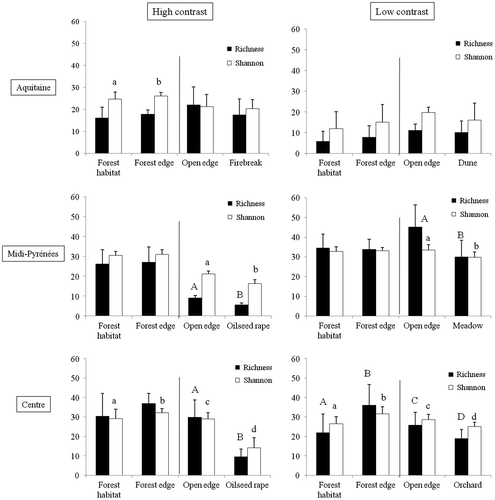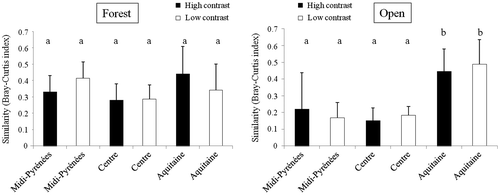Figures & data
Figure 1. Expected theoretical patterns of plant species diversity in high- and low-contrast situations between forest and open habitats. In low-contrast situation, edge effect is assumed to be positive, i.e. more species are encountered in the edge than in the core habitat (in grey), whatever the side (forest or open). In high-contrast situation, it is assumed to be mixed (see the text for details).
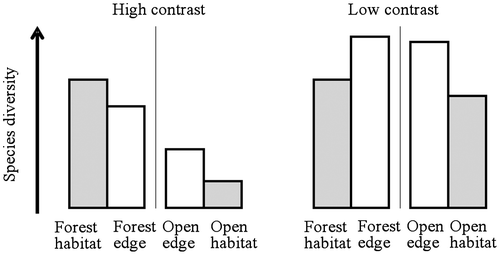
Figure 2. Location of the three studied regions with type of open habitat adjoining forests (high/low disturbed habitat corresponding to high/low contrast situation).
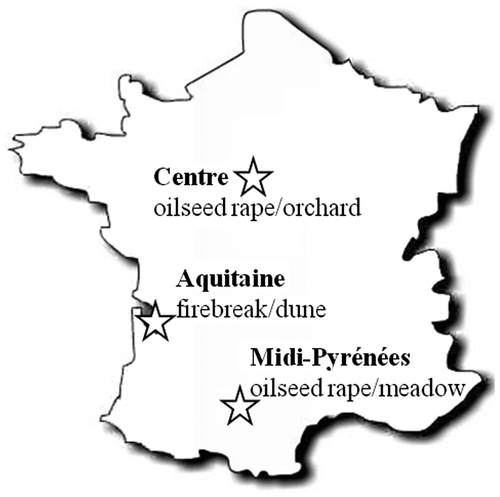
Figure 3. Scheme of the sampling design. Two 100-m² plots parallel to the border were placed in the forest edge and the forest habitat, at 0 m and 50 m from the border, respectively. Two sets of five 4 m² plots were placed within the open edge and the open habitat, at 0 m and 30 m at least from the border. The border was defined as the line formed by mature trees between forest and open habitats.
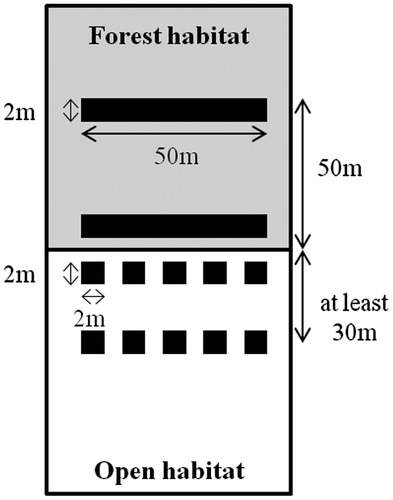
Figure 4. Species richness (mean ± SD) and Shannon species diversity (× 10; mean ± SD) in the forest and open habitats and their respective edges in the three regions of France. Capital letters (lowercase, respectively) indicate significant differences for mean species richness (mean Shannon species diversity, respectively) at α = 0.05. Note that forest habitat was compared uniquely to forest edge and open edge uniquely to open habitat.
